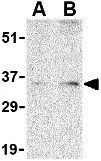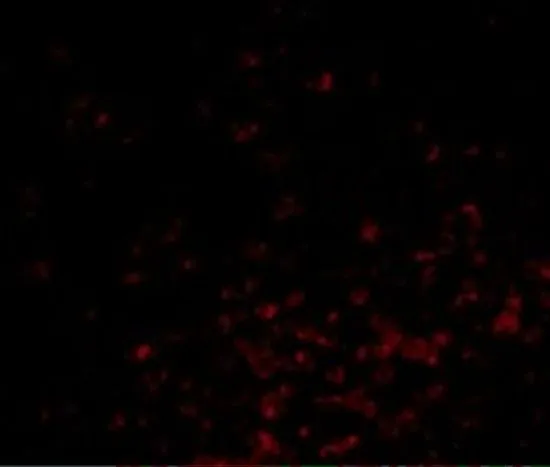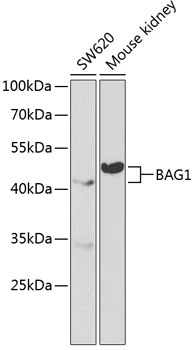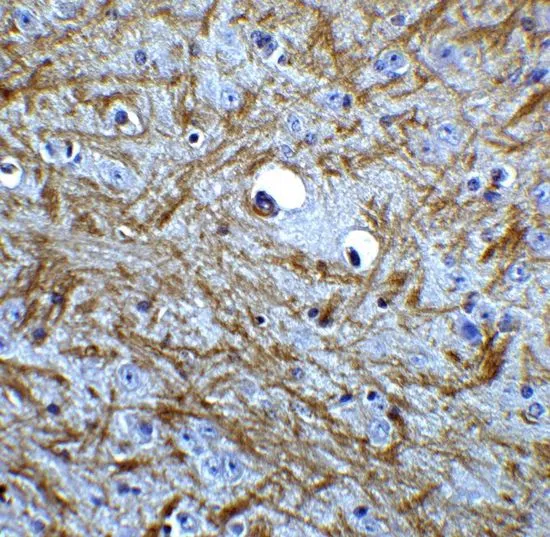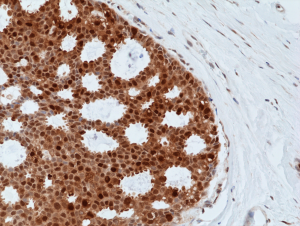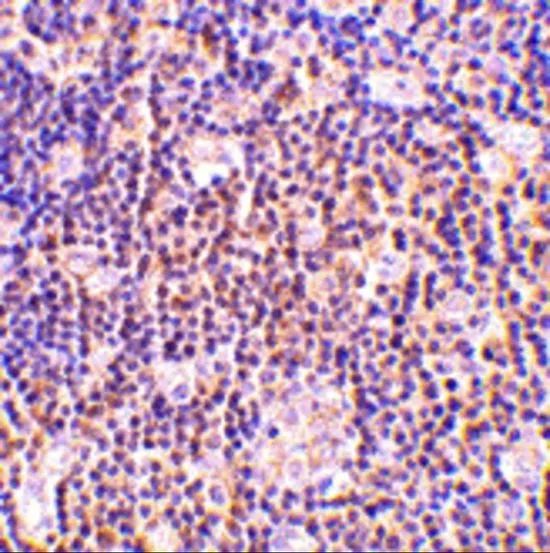
IHC-P analysis of human lymph node tissue using GTX31737 Bag1 antibody. Working concentration : 2 microg/ml
Bag1 antibody
GTX31737
ApplicationsWestern Blot, ELISA, ImmunoHistoChemistry, ImmunoHistoChemistry Paraffin
Product group Antibodies
TargetBAG1
Overview
- SupplierGeneTex
- Product NameBag1 antibody
- Delivery Days Customer9
- Application Supplier NoteWB: 1 - 2 microg/mL. IHC-P: 2 microg/mL. *Optimal dilutions/concentrations should be determined by the researcher.Not tested in other applications.
- ApplicationsWestern Blot, ELISA, ImmunoHistoChemistry, ImmunoHistoChemistry Paraffin
- CertificationResearch Use Only
- ClonalityPolyclonal
- Concentration1 mg/ml
- ConjugateUnconjugated
- Gene ID573
- Target nameBAG1
- Target descriptionBAG cochaperone 1
- Target synonymsBAG-1, HAP, RAP46, BAG family molecular chaperone regulator 1, BCL2 associated athanogene 1, BCL2-associated athanogene, Bcl-2 associating athanogene-1 protein, Bcl-2-binding protein, glucocortoid receptor-associated protein RAP46, receptor-associated protein, 46-KD
- HostRabbit
- IsotypeIgG
- Protein IDQ99933
- Protein NameBAG family molecular chaperone regulator 1
- Scientific DescriptionThe oncogene BCL2 is a membrane protein that blocks a step in a pathway leading to apoptosis or programmed cell death. The protein encoded by this gene binds to BCL2 and is referred to as BCL2-associated athanogene. It enhances the anti-apoptotic effects of BCL2 and represents a link between growth factor receptors and anti-apoptotic mechanisms. Multiple protein isoforms are encoded by this mRNA through the use of a non-AUG (CUG) initiation codon, and three alternative downstream AUG initiation codons. A related pseudogene has been defined on chromosome X. [provided by RefSeq, Feb 2010]
- Storage Instruction-20°C or -80°C,2°C to 8°C
- UNSPSC12352203

